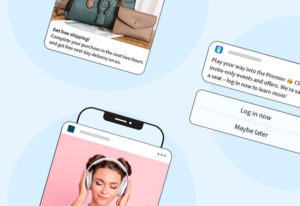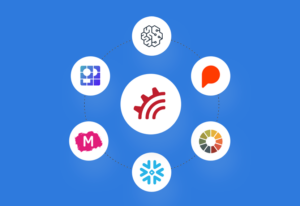How do you power great customer experiences?
Looking around, it seems pretty clear that marketers are becoming more likely to utilize data in real time to power customer interactions (This lookbook that Movable Ink released last week showcases a few examples). And, as consumers, we’re getting more comfortable expecting these experiences — show me my rewards points balance or recommend a trip for me in an email, and I expect it to be my up-to-date balance or a relevant destination I would like to go.
But while using data to drive content sounds fairly straightforward, getting access to that data is another story — and this generates a lot of friction between I.T. and Marketing. Generating data-driven creative requires scalable and low-latency data access, typically at a rate too high for modern data warehouses to support. This requires I.T. to build an API (Application Programming Interface) for marketing’s needs … which change frequently. At MessageGears, we hear time and again the pain of being slotted into I.T.’s backlog of development efforts for a seemingly simple or straightforward change to an API that delays marketing campaigns by months.
By removing the hurdles of API data access that most marketing organizations face, our hope is to remove the friction of waiting on I.T. to deliver data and empower more marketers to create better brand experiences that are more relevant to consumers.
And things that seem simple to Marketing could cause an unexpected amount of development time. For example, consider a simple API that returns the most recently browsed product for a recipient, to be displayed on a webpage:
- Marketing may want to increase that number to the last three most recently browsed products. Unfortunately, this history is not kept in the underlying data store and will require a re-architecting of the solution.
- What if the API also contained their most recent purchase? Unfortunately, that data is kept in an entirely different database and can’t be joined in at this time
- How about cross-selling items that look like that product? That would require plugging into the company’s recommendation engine, which is already taxed from supporting other channels.
At MessageGears, we think that tech should liberate, and not limit. That’s why MessageGears Engage was created to be Marketing’s API-as-a-Service (AaaS) to power real-time experiences. By removing the hurdles of API data access that most marketing organizations face, our hope is to remove the friction of waiting on I.T. to deliver data and empower more marketers to create better brand experiences that are more relevant to consumers.
Some things to consider when comparing MessageGears’ AaaS to building out an internal I.T.-driven API:
- Do you need it now? Navigating I.T. backlogs takes an indeterminate amount of time, while MessageGears Engage only needs an hour to install and have data available
- Will your needs change in the future? As we covered earlier, having I.T. re-architect APIs may take time, while MessageGears Engage was made to store and deliver data in any format
- What’s your budget? I.T. labor hours are expensive, while MessageGears Engage’s scalable infrastructure was designed for frequently changing data and bursts of demand, making Engage a cost-friendly option when compared to bespoke development by the I.T. team
While full-suite AaaS companies have been gaining popularity among developers for the ability to provide them with all they need to create and productionalize APIs, Marketers’ programmatic needs are typically more straightforward: they just need the data. MessageGears Engage’s data AaaS abilities enable companies to ‘Dream and Do’ things they couldn’t when held back by their I.T. teams.
That just leaves one last question: what kinds of experiences will you create?
Let us know @MessageGears.






